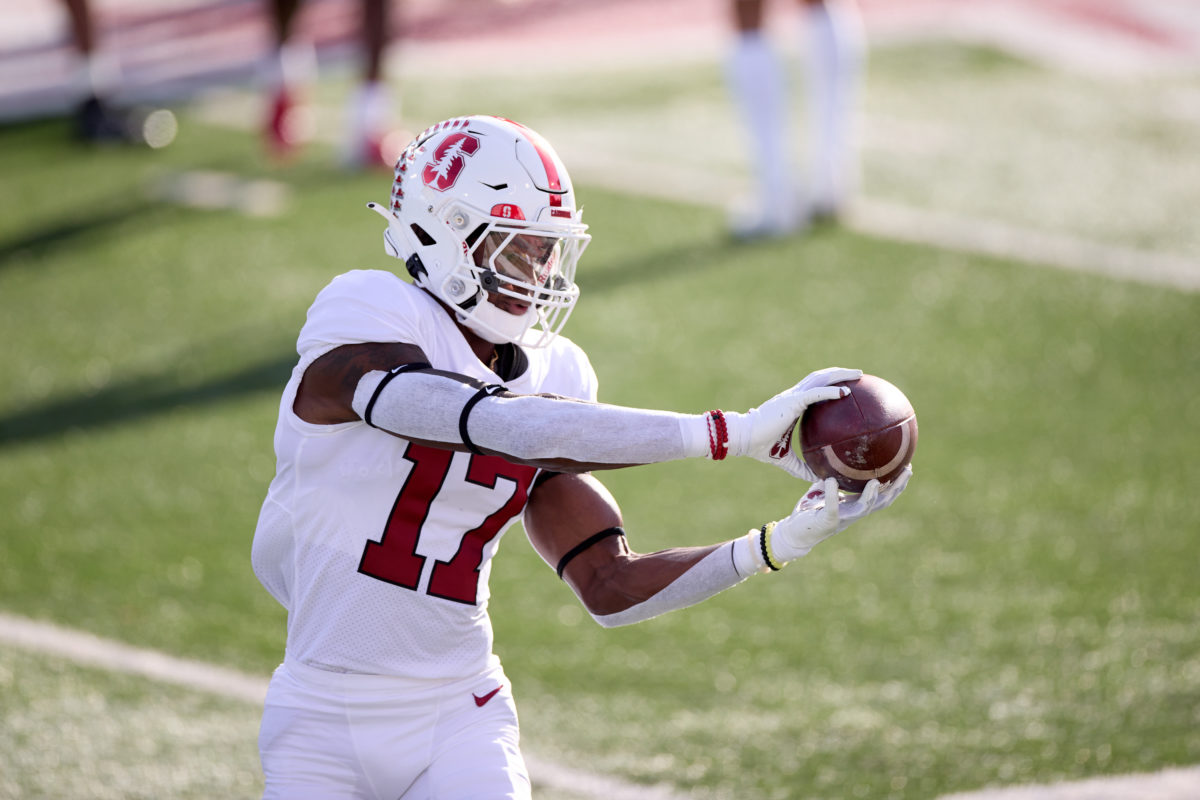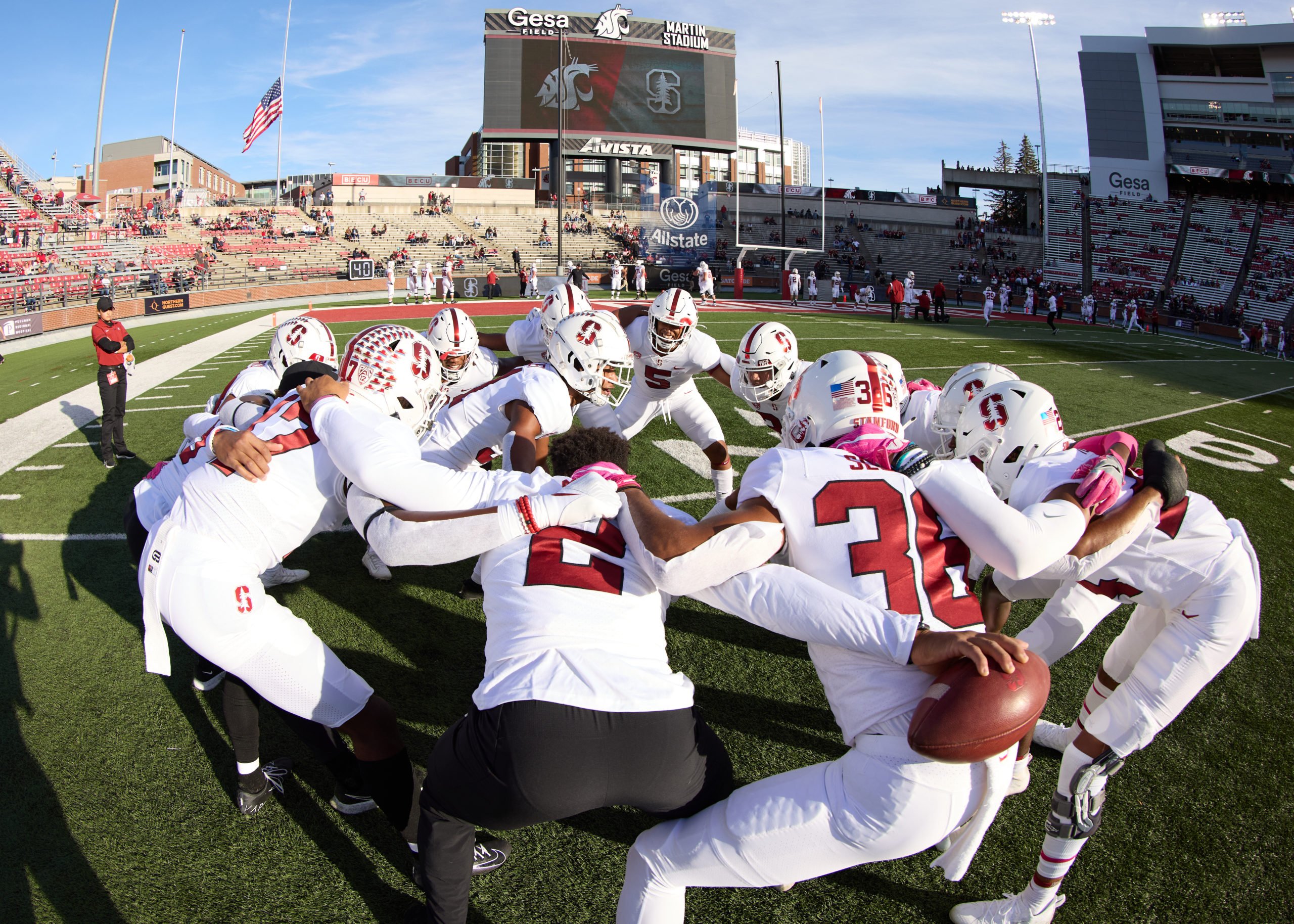It’s bye week.
After seven games, Stanford sits at 3-4, with a 2-3 record in conference play.
The season has been up and down for the Cardinal. More often than not, inconsistency has plagued the squad, which has struggled on multiple occasions to play consistent football for 60 minutes.
Just two weeks ago, Stanford had a winning record, just one conference loss and a head-to-head victory over Oregon. They seemed to be in a good position to take the Pac-12 North. But a lot has changed since then.
Now, the Cardinal sit under .500, have three conference losses and are in jeopardy of missing a bowl game.
So how did we get here? Let’s break down the positives and negatives for the Cardinal over the first seven games.
Offense
The Good
Tanner McKee
After head coach David Shaw elected to rotate playing time under center between senior Jack West and sophomore Tanner McKee to open the season, McKee was named the starter for the Cardinal in Week 2. Since then, all he has done is impress. Over the course of the season, the Corona, Calif. native posted a 14-3 touchdown-to-interception ratio and a 64.7% completion percentage. His QBR of 76.1 is good for 17th in the nation and third in the Pac-12. Now the leader of the second-best passing offense in the conference, the former highly-rated recruit is one of the best players on the squad and has emerged as a promising NFL prospect.
Pass-Catchers
The second half of the prolific Stanford passing offense (that feels weird to write) are the wide receiving corps and the recent emergence of sophomore tight end Benjamin Yurosek. Even with Stanford’s top receiver, senior Michael Wilson, yet to see the field this season — he could potentially return against Washington next week, the rest of the wide receiver group has been excellent in his absence. Wide receivers coach Bobby Kennedy has developed quite the group of your typical Stanford receivers. Junior Elijah Higgins, senior Brycen Tremayne and sophomore John Humpreys are all at least 6’3″ and 200+ pounds. All three are in the top 25 in receiving yards in the Pac-12. It would be a major surprise if Tremayne sees the field again this season after an ugly injury in the Oregon game, but getting Humphreys and Wilson back soon should mean that this group will continue the strong play the rest of the way. Add on the surging tight end Yurosek, who has collected 118 and 99 yards in the last two games, respectively, and you have a formidable passing attack.
The Bad
The Offensive Line
Oh boy, here we go. Let’s take a look back at our season preview article: “The Cardinal offensive line has had some moving pieces this offseason but may arguably be the deepest position group on the team heading into the season…the junior class has a remarkable amount of experience.”
We could not have been more wrong. What we predicted to be the second best position group on the team — with the running backs at the top — has been arguably the worst. Looking at the big picture (that is, aside from the calamitous final drive against Washington State), the offensive line has been alright in pass protection: nothing impressive by any means but acceptable enough to allow the Cardinal to have one of the top passing offenses in the conference.
On the other hand, the run blocking has been miserable. Stanford has the worst rushing offense in the Pac-12, averaging a mere 84.2 yards-per-game on the ground in conference games — the next closest is Washington State at 93.8 yards-per-game. The majority of the time, the talented Cardinal running backs are running into brick walls.
Every single player on the current offensive line was solid to very good when they saw playing time last year, so what happened? It’s hard to tell, but their struggles are absolutely killing the Cardinal.
Defense
The Good
Unproven players stepping up in the secondary
Heading into the season, we talked about how, outside of the starters at corner and safety, there was a lot of unproven depth in Stanford’s secondary. Without junior Salim Turner-Muhammad and only limited play from senior Ethan Bonner, freshmen Jimmy Wyrick and Jaden Slocum and juniors Zahran Manley and Nicolas Toomer have stepped in and impressed at crucial moments. Wyrick started his first ever game at nickelback against USC and has been a key part of the defense since, totaling 17 tackles, an interception and five pass breakups. Toomer had his breakout game against Oregon, finishing with a team-leading 10 tackles. These players stepping up has definitely been a welcome sign for defensive backs coach Duane Akina and bodes well for the Cardinal when the unit can return to full strength.

Linebacker durability
Another question coming into the season: could the linebackers stay healthy, and, in particular, could the chronically injured trio of senior Ricky Miezan, senior Jacob Mangum-Ferrar and junior Tristan Sinclair stay healthy? Those three have generally been able to stay healthy — as has the rest of the position group generally, playing a large role for the Cardinal defense to date. Miezan has made 44 tackles and two sacks so far and is the star of the bunch.
As for the outside linebackers, sixth year Gabe Reid is in the midst of a fine season for Stanford. He has been responsible for 35 tackles (four and a half for a loss), half a sack and an interception. Junior OLB Stephon Herron leads the team in sacks with three.
The Bad
Rushing Defense
For the past few years, the Cardinal have struggled against the run — both from the traditional run game and from dual threat quarterbacks. UCLA quarterback Dorian Thompson-Robinson found the end zone with his legs twice against Stanford and utilized the read-option well, while his running back Zach Charbonnet ran for 118 yards and a touchdown versus Stanford. At Arizona State, quarterback Jayden Daniels ran for 76 yards, including a 51 yard touchdown run where he essentially walked into the endzone untouched. Meanwhile, Sun Devils’ running back Rachaad White averaged 7.4 yards per carry.
A big part of the Cardinal’s struggle has been missed tackles. Time and time again we have seen an opposing team’s runner seemingly get wrapped up, only for them to break free and gain extra yards. Stanford ranks 10th in the conference in rush defense and dead last in total defense. This bye week is a great opportunity to improve.
Heading into the bye week, here’s where @StanfordFball ranks among the @pac12 in some key stats (conference games only):
— Jibriel Taha (@JibrielTaha) October 17, 2021
Total Offense: 8th
Passing Offense: 2nd
Rushing Offense: 12th
Total Defense: 12th
Passing Defense: 5th
Rushing Defense: 10th
Pass Rush
Stanford’s secondary has done its job for the most part this season, but a poor pass rush has hindered the defense. The Cardinal have only recorded 13 sacks so far. Before the season, we knew the defensive line was going to be a weak point for this team and acknowledged that senior defensive end and captain Thomas Booker needed to have a big year for the defense to be successful. While Booker has been a large presence on the line in terms of tackles and tackles for loss, he has not been getting to the quarterback as much as expected, only making one and a half sacks in the first half of the season.
Quite simply, Stanford’s pass rush is giving the opposing quarterbacks too much time in the pocket, which gives receivers downfield too much time to get open. We do not know exactly what needs to change, but pass rushing is surely to be another focus of the bye week for the coaching staff.
Bottom Line
In our season preview article we had the Cardinal at 4-3 overall and 2-3 in conference play at this point in the season. We nailed the conference record (let’s ignore the predictions for the individual games)! It goes without saying that 3-4 is not where the Cardinal want to be.
The division title is a long shot at this point, and the Cardinal have a very real chance at missing out on a bowl. According to ESPN’s FPI, Stanford has a 4.3% chance at winning the North and a 44% chance at reaching the six wins needed for bowl eligibility. On a more positive note, if you took the over on Vegas’s preseason win total of four for the Cardinal, you’re in great shape!
Much has been made of Stanford’s difficult schedule. It has certainly been tough and littered with road games, but it should not be invoked to explain away where the team is now. Only one of the seven teams the Cardinal has played is currently ranked. Stanford is 2-4 against currently unranked teams.
The Cardinal have dealt with their fair share of injuries, especially in the secondary. But the irony of it all is that those are not the position groups that are costing them games — it’s those that are healthy. Sure, the injured secondary got torched a couple times against Washington State, but a significant part of that is due to the complete lack of a pass rush.
The team’s performance has to improve in the trenches or Stanford will miss a bowl once again. The slew of road games in the first half means that the Cardinal will be seeing a lot of Stanford Stadium in the upcoming weeks — four of the last five games come at home. Can they use that to their advantage? We’ll find out starting next Saturday as they host Washington at 7:30 p.m. PT.
